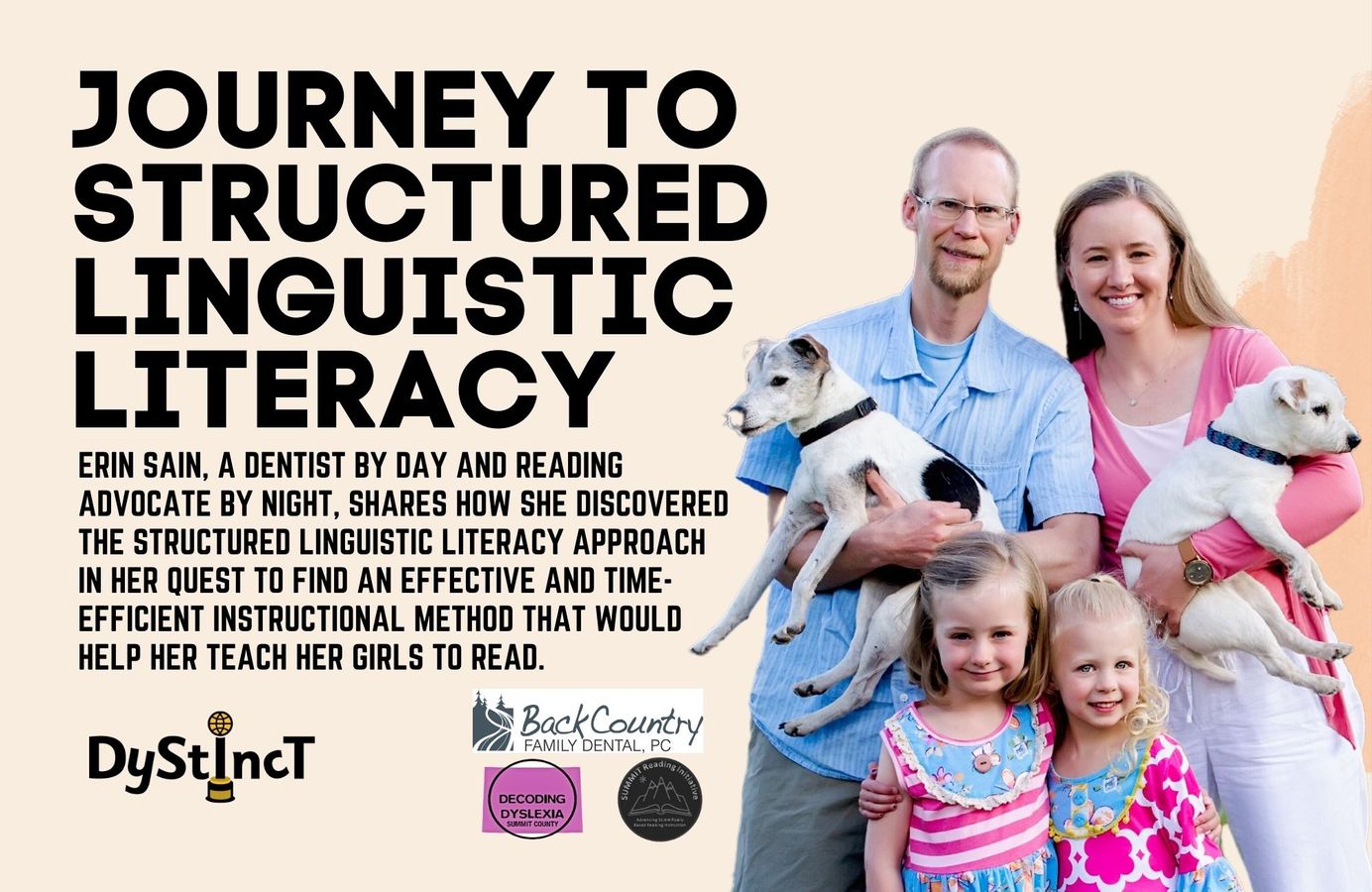
Issue 13: Journey to Structured Linguistic Literacy | Erin Sain
Erin Sain, a dentist by day and reading advocate by night, shares how she discovered the Structured Linguistic Literacy approach in her quest to find an effective and time-efficient instructional method that would help her teach her girls to read.
From the beginning, we started tutoring, and I set out on a journey to learn how to teach reading to my children. I purchased a highly recommended home school program and started the long journey of nightly reading instruction. Over several years, we trudged through hours of nightly instruction, learning phonics rules and exceptions to rules. We went through the motions, but progress was slow.
After completing a comprehensive neuropsychological evaluation, recommendations included transitioning away from our homeschool program to Lindamood Bell, a speech-first approach. In my search for a better program to use at home, I came across an approach called Structured Linguistic Literacy. I asked many experts what it was and how Structured Linguistic Literacy was different from traditional phonics programs. Nobody could give me a definitive answer as to how these programs were different from traditional phonics. I continued learning about Structured Linguistic Literacy programs and attended webinars to learn more. In all honesty, I was skeptical.
It was not until I watched several of Dr Mark Seidenberg's reading webinars that I started questioning what I had known as the gold standard of reading instruction. He discussed that reading is not best learned through explicit instruction of every phonics rule and exception to the rule but by providing a delicate balance of explicit instruction while allowing the brain's natural pattern-seeking, self-teaching machinery to predominate. Around the same time, Dr Kearn's research had just come out, revealing the unreliability of syllable division rules. Dr Kearns appeared on one of Dr Seidenberg's webinars, explaining his current research and revealed that instructional time spent on syllable division rules might be inefficient and teaching students methods that are more flexible may prove more efficient.
This post is for paying subscribers only
SubscribeAlready have an account? Log in


